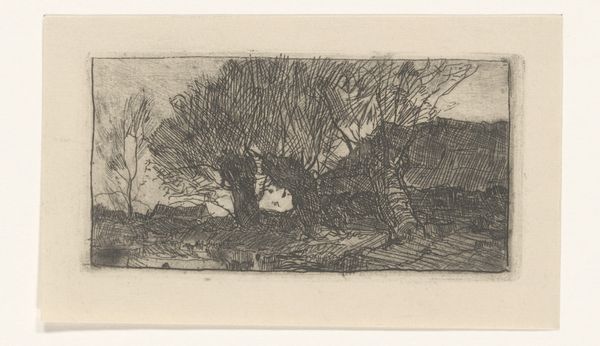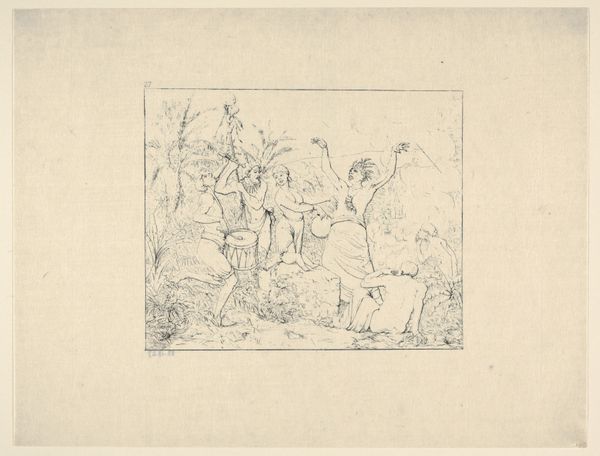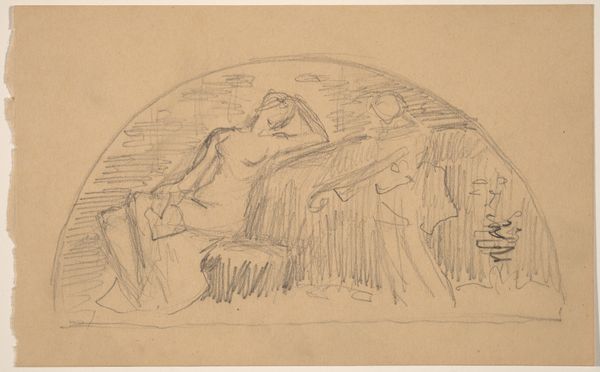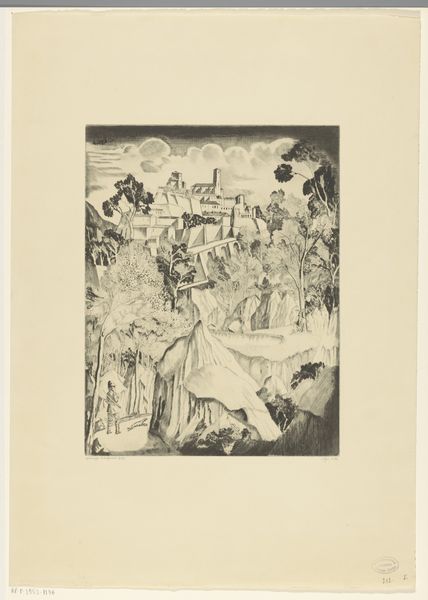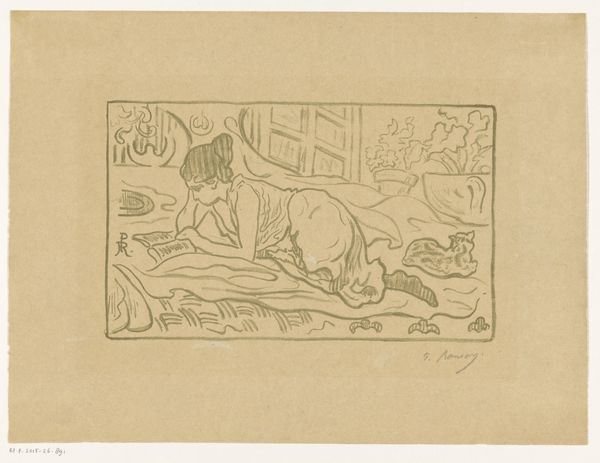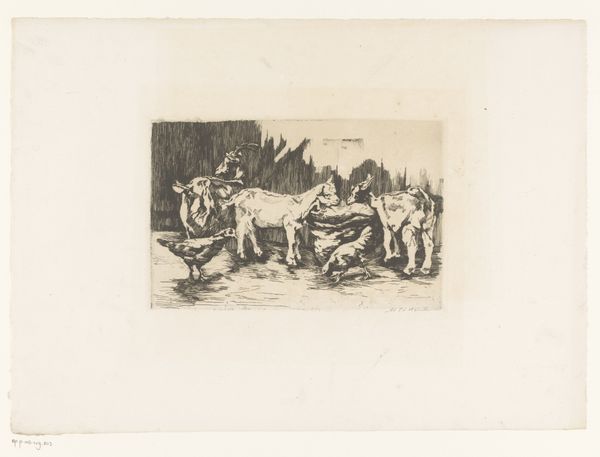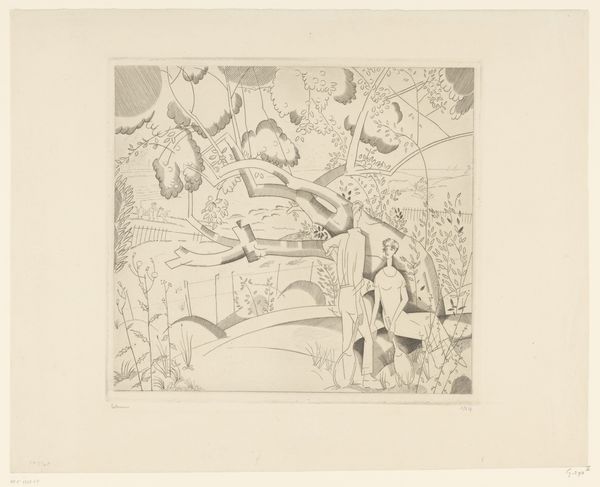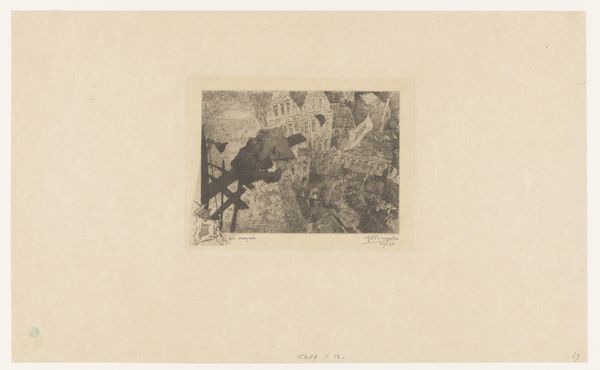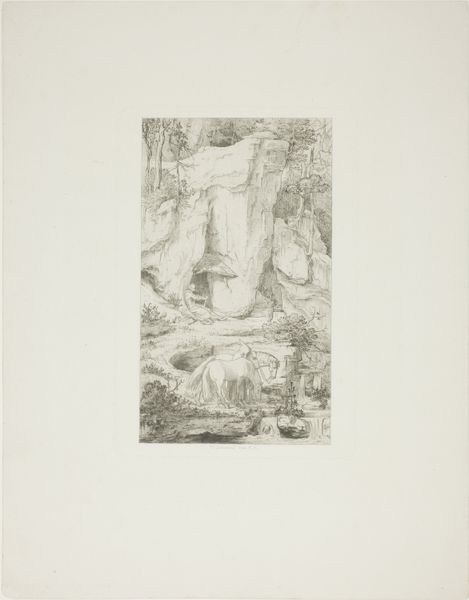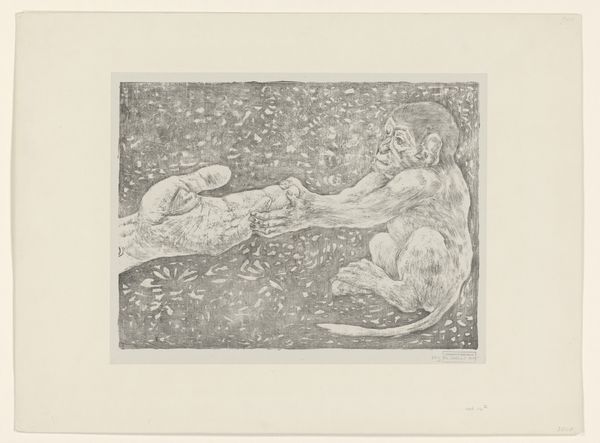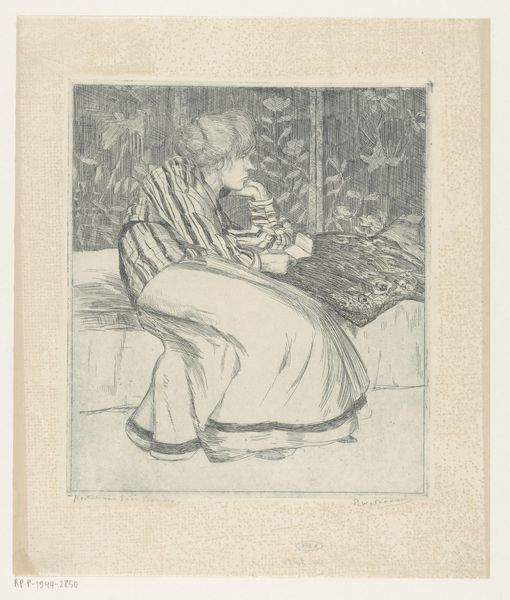
Dimensions: height 166 mm, width 344 mm, height 309 mm, width 443 mm
Copyright: Rijks Museum: Open Domain
Curator: We are looking at "Waterlelies," created between 1888 and 1939 by Willem C. Scherjon. This captivating artwork is rendered in pencil, with distinct lines that suggest an old engraving. Editor: My immediate impression is one of delicate serenity, almost like a musical score transcribed onto paper. The linear elements are so refined; it's incredibly balanced. Curator: It’s a lovely example of employing symbolism within a seemingly simple landscape. Water lilies often stand for purity, rebirth, and enlightenment in art, but the inclusion of dragonflies also contributes further to this sense of ephemerality. Editor: Agreed. The structural contrast between the rigidity of the iris stems, contrasted with the undulating shapes of the lily pads, guides the eye, producing dynamism within this limited palette. Curator: Observe how Scherjon utilizes line to evoke different textures. The faint vertical lines in the background provide an abstract backdrop, but draw the eye towards the blooms that stand apart from it. He has flattened the image using line to make it all decorative. Editor: Exactly. The dragonfly perched on a lily becomes a symbol of transformation. They act as messengers between worlds because of their amphibious life cycle. Their presence adds layers to the idea of transcendence already suggested by the water lilies. Curator: Considering its creation period, it’s easy to see some of the roots of impressionism with those blurry impressions in the background. How does Scherjon use line to make the naturalistic forms symbolic instead? Editor: Perhaps the drawing invites introspection through quiet contemplation. The water lilies are about reflecting on spiritual transformation, whereas the rigid, unbending lines are of nature but not representational nature itself. The lack of color simplifies the emotional range, channeling toward serenity, and still reflection, doesn't it? Curator: Ultimately, the drawing compels us to ponder the interplay between symbolism and the objective reality represented, or perhaps, represented to us, through the artist’s conscious rendering of form and texture. Editor: A work of subtle strength and lasting impressions. A visual poem about the power of transformation.
Comments
No comments
Be the first to comment and join the conversation on the ultimate creative platform.
